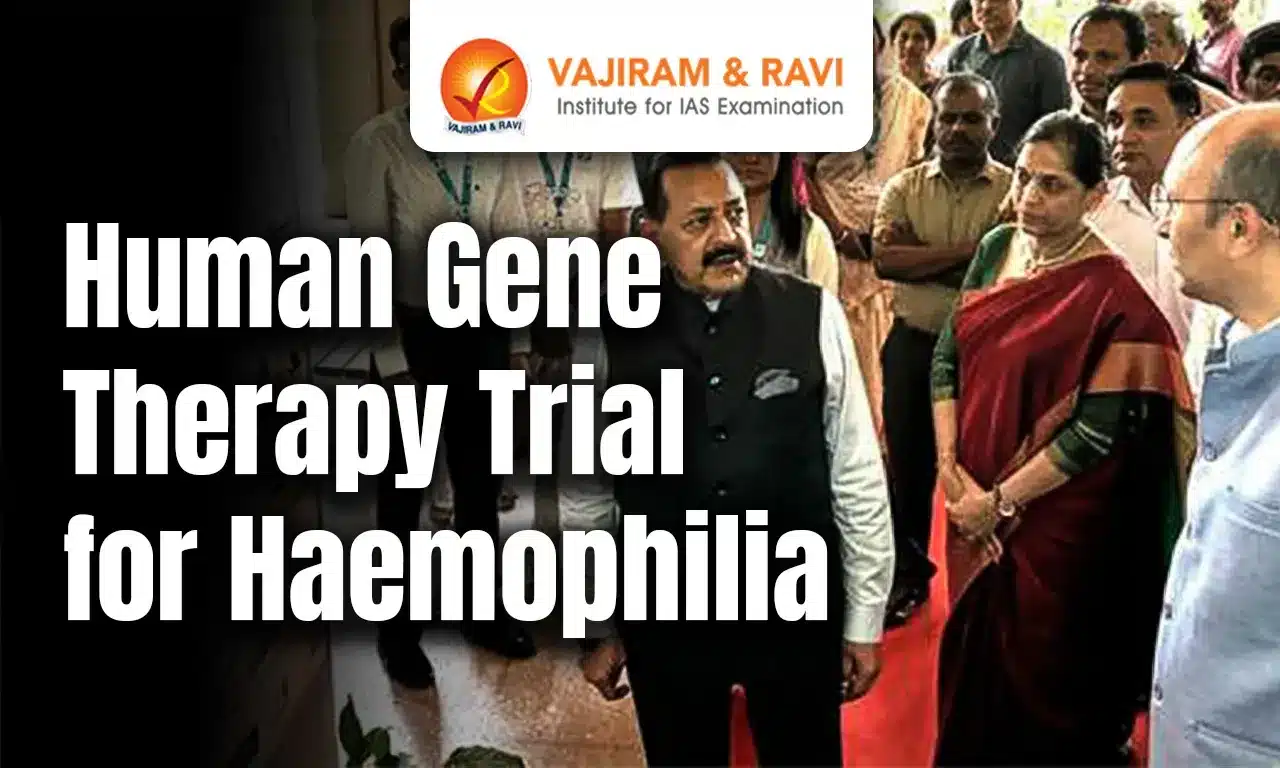Human Gene Therapy Trial for Haemophilia Latest News
BRIC-inStem, Bengaluru, has successfully conducted India’s first-in-human gene therapy trial for Haemophilia in collaboration with CMC Vellore.
About Gene Therapy
- Gene therapy is a biomedical technique that involves modifying or replacing faulty genes in a person’s cells to treat or prevent diseases.
- The primary objective is to introduce a functional gene to compensate for a mutated or disease-causing gene.
- Gene therapy approaches include:
- Replacing a mutated gene with a healthy copy.
- Inactivating a malfunctioning gene.
- Introducing a completely new gene into the body.
- Unlike conventional medicines, gene therapy targets the root genetic causes inside cells, rather than just addressing symptoms.
- Current clinical trials focus on both inherited and acquired disorders, using methods such as:
- Ex vivo modification of hematopoietic stem cells and T-lymphocytes.
- In vivo gene delivery or use of gene-editing reagents directly into the patient’s body.
About Haemophilia
- Haemophilia is a rare genetic bleeding disorder where blood clotting is impaired due to mutations in genes encoding clotting proteins.
- These genes are located on the X chromosome, making males more susceptible.
- It affects about 1 in 10,000 people, with India having a significant patient load.
About BRIC-inStem
- BRIC-inStem, part of the Biotechnology Research and Innovation Council (BRIC), integrates 14 autonomous research institutions under one national umbrella.
- It has pioneered translational and regenerative research, including:
- Gene therapy
- Anti-viral germicidal masks (developed during COVID-19)
- ‘Kisan Kavach’ pesticide shield for farmers
- Biosafety Level III Lab at BRIC-inStem is essential for studying high-risk pathogens under the One Health Mission.
Source: PIB
Last updated on June, 2025
→ UPSC Notification 2025 was released on 22nd January 2025.
→ UPSC Prelims Result 2025 is out now for the CSE held on 25 May 2025.
→ UPSC Prelims Question Paper 2025 and Unofficial Prelims Answer Key 2025 are available now.
→ UPSC Calendar 2026 is released on 15th May, 2025.
→ The UPSC Vacancy 2025 were released 1129, out of which 979 were for UPSC CSE and remaining 150 are for UPSC IFoS.
→ UPSC Mains 2025 will be conducted on 22nd August 2025.
→ UPSC Prelims 2026 will be conducted on 24th May, 2026 & UPSC Mains 2026 will be conducted on 21st August 2026.
→ The UPSC Selection Process is of 3 stages-Prelims, Mains and Interview.
→ UPSC Result 2024 is released with latest UPSC Marksheet 2024. Check Now!
→ UPSC Toppers List 2024 is released now. Shakti Dubey is UPSC AIR 1 2024 Topper.
→ Also check Best IAS Coaching in Delhi
Human Gene Therapy Trial for Haemophilia FAQs
Q1. What is gene therapy in the context of Haemophilia?+
Q2. Which clotting factor is deficient in Haemophilia A?+
Tags: human gene therapy trial for haemophilia Prelims Pointers upsc current affairs upsc prelims current affairs












